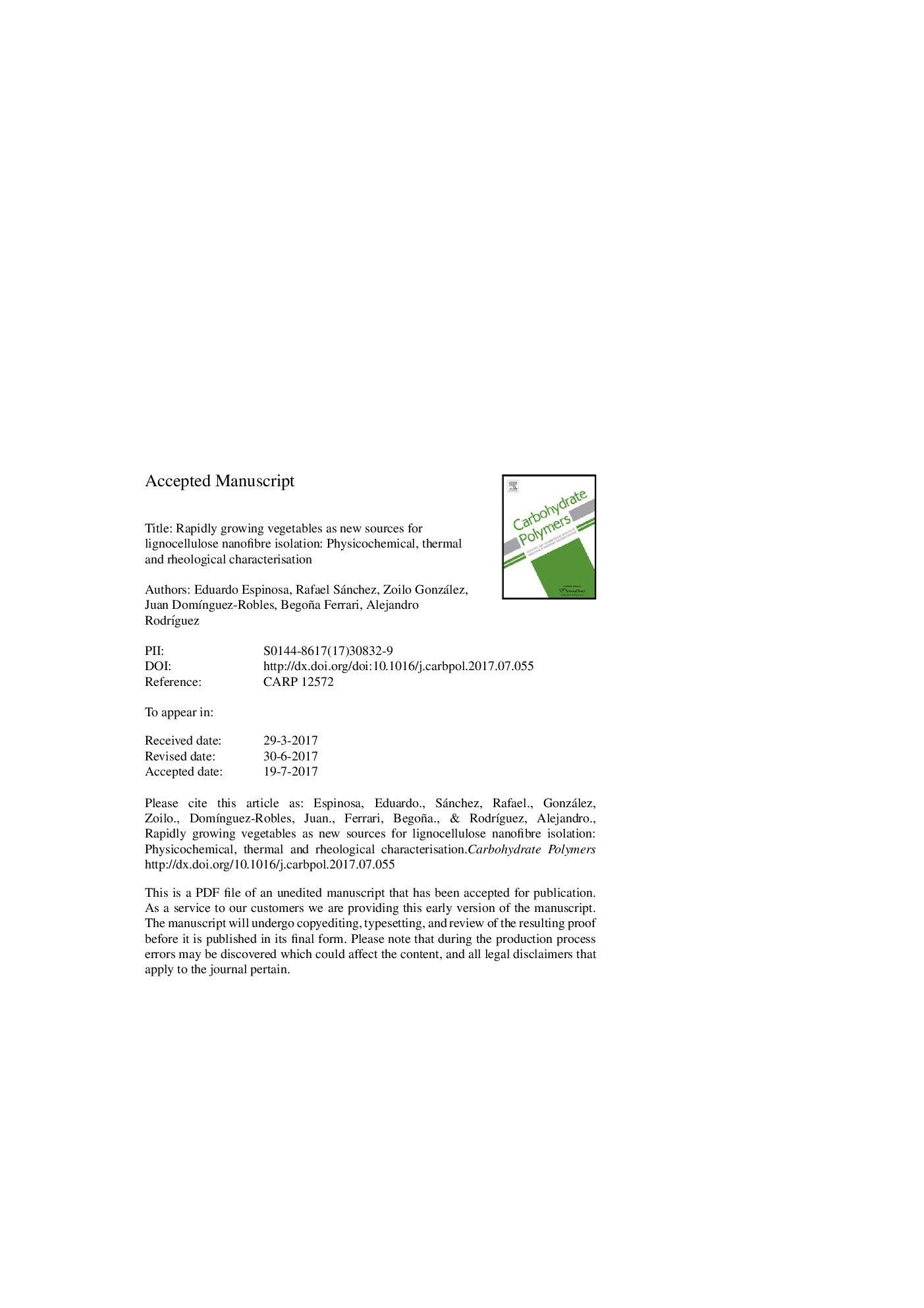| Article ID | Journal | Published Year | Pages | File Type |
|---|---|---|---|---|
| 5156591 | Carbohydrate Polymers | 2017 | 34 Pages |
Abstract
Rapidly growing vegetables could be an abundant and cheap sources of lignocellulose biomass for lignocellulose nanofibre (LCNF) production. The aim of this work is to study the feasibility of using Chamaecytisus proliferus and Leucaena leucocephala for LCNF isolation by mechanical, enzymatic and TEMPO-mediated oxidation pre-treatments. Characterisation of the nanofibres shows that there are significant differences in the production of LCNF depending on the raw material and pre-treatment used. XRD and FTIR analysis show that homogenisation has a strong negative effect on the crystallinity index; however, the higher lignin content of tagasaste (10%) protects the fibre, causing a smaller decrease in crystallinity. The thermal stability of LCNF is also affected by the high lignin content in the case of tagasaste, which exhibited maximum degradation temperatures of 340-315 °C, that were higher than those for leucaena (330-310 °C). A strong shear thinning behaviour was observed in most of the LCNF, which revealed a great degree of interconnectivity in the gel like-network.
Keywords
Related Topics
Physical Sciences and Engineering
Chemistry
Organic Chemistry
Authors
Eduardo Espinosa, Rafael Sánchez, Zoilo González, Juan DomÃnguez-Robles, Begoña Ferrari, Alejandro RodrÃguez,
